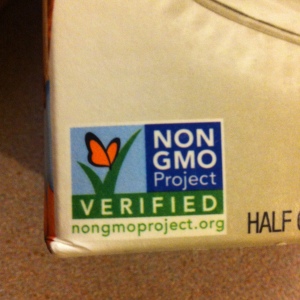Have you heard of GMOs? GMO stands for Genetically Modified Organisms. But what does this really mean? This is when a string of DNA is taken from one organism and transplanted into a different organism in order to gain desirable traits. The new organism has been genetically modified. The practice has been on-going for years without much notice.
Until lately.
California attempted to require foods that contain GMO ingredients to be labeled as such in 2012 with Proposal 37. The measure failed 47% to 53%.
In the fight, major food companies poured millions and millions of dollars into the campaign against the measure, claiming GMOs are safe and that labeling would drive up food costs. Supporters of the measure claimed that the issue wasn’t about safety, but about informed choice. Many labels on food we buy are not required for safety reasons, like whether or not your orange juice is fresh squeezed or from concentrate. And given that over 50 countries around the world already require GMO labeling, (including all of the European Union) it’s hard to believe that the cost is so high that it could damage business, given that those objecting are all global companies that market their same products in those 50 countries.
But the battle for GMO labeling has taken a big step forward. Little ol’ Vermont has just passed a state law mandating the labeling of foods containing GMOs. They did what California almost did in 2012. When I saw this headline hit my facebook newsfeed (courtesy of Michael Pollan), I was immediately sucked in. First of all, I think it would be a good thing to label foods that do contain GMOs. Maybe they are fine for most people. Maybe not. Either way, they aren’t likely improving my health, so I’ll pass.
Secondly, I have a tiny crush on Vermont, especially when it comes to food system issues. I spent a week in Burlington, Vermont in the summer of 2012 participating in the University of Vermont’s first ever Breakthrough Leaders Professional Certificate Program for Sustainable Food Systems. Coming just after finishing my public health coursework at Johns Hopkins, I soaked up all of the information possible, met some amazing people as obsessed with food as I am, and shared what I learned here.
In regards to Vermont, I made the following observations:
Vermont’s small size and independent politics have made it the perfect place for developing a regional food system. Just over 600,000 people live in Vermont (the same as in Baltimore) and according to my unscientific observations during my week-long visit, they all know each other.
Although Vermont’s short growing season and mountainous terrain make agriculture tougher, it turns out they’re a blessing in disguise. There’s minimal “big ag” influence in Vermont, so politicians aren’t beholden to any Cargills or Monsantos. Instead, the university president, State Secretary of Agriculture, and Governor (among others) all felt free to publicly support the movement toward regional food networks. You won’t find that in Iowa.
I am confident that these factors helped Vermont pass their mandate. California attracts a lot of agriculture attention. Vermont, not quite so much. And with Connecticut and Maine having passed laws that will mandate GMO labeling if enough neighboring states require it too, Vermont may just be the tiny domino to set a major policy change in action throughout the country.
Once food companies start having to make different packaging for 3 states, the federal government will likely step in to create one national set of standards to make the labeling process easier for food companies. In the meantime, food companies will begin lawsuits to prevent Vermont from enacting their new law.
While the politicians and lawyers duke it out, there are some folks taking proactive steps to voluntarily label their foods as GMO-free. I just searched my cupboards and fridge and found one example.
The Non-GMO Project is a non-profit organization committed to preserving and building sources of non-GMO products, educating consumers, and providing verified non-GMO choices. This organization has helped let me know that my almond milk is GMO free! That feels good!
Aside from these helpful labels, the only other way to know your packaged food is free from GMOs is to purchase certified organic foods, which are not allowed to contain GMOs. Organic foods often don’t redundantly label their foods as GMO-free, since it’s implied.
Your third option is to purchase organic seeds and grow your own food at home! I’m attempting for the first time in my big-kid life. Stay tuned for updates on that one…

